
Source: iStock
Paracord, short for parachute cord, is a lightweight and high-tensile-strength nylon cord that’s widely used for different applications. Throughout the years, it has grown in popularity among preppers, survivalists, crafting enthusiasts, and outdoor enthusiasts.
However, there are people (like you) who wonder if paracord comes in different grades. In this article, we’ll explore the different aspects of parachute cords, including their characteristics, grades, and common uses.
What is Paracord?
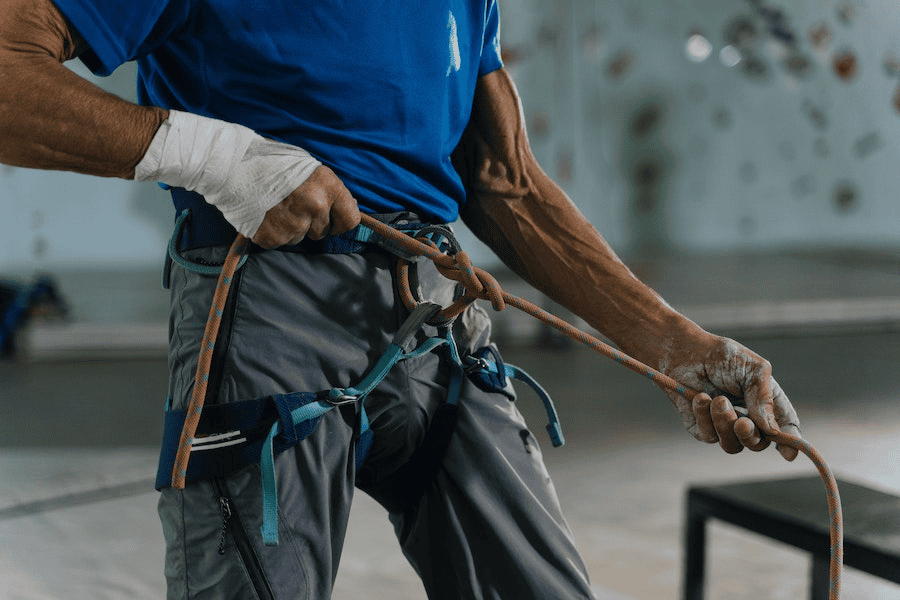
Source: Pexels
Paracord was first used during the Second World War. The U.S. military manufactured paracord to attach the canopy of a parachute to its harness. After landing, paratroopers cut the cord to use it for many other tasks.
Today, it’s no longer exclusively used by the military. It has found its new role as a general-purpose utility cord for civilians.
It’s great for a wide range of crafting projects, emergency medical situations, and outdoor recreation, just to name a few. If you remove its outer sheath, you can use the inner strands as fishing line, thread for sewing or repairing cuts, or a fire starter.
Paracord is usually made of nylon. Its construction consists of an inner core (called the kern) with several strands that are protected by a woven outer sheath (called the mantle). The number of strands in paracord can affect its durability and load-bearing capacity.
In general, the type or grade of a paracord is based on its inner strand count, strength, and other unique features (e.g., glows in the dark and reflective surface). Here are a few common classifications of paracord:
- Commercial paracord
- Mil-spec paracord
- Type I
- Type II
- Type III
- Type IV
Commercial Paracord
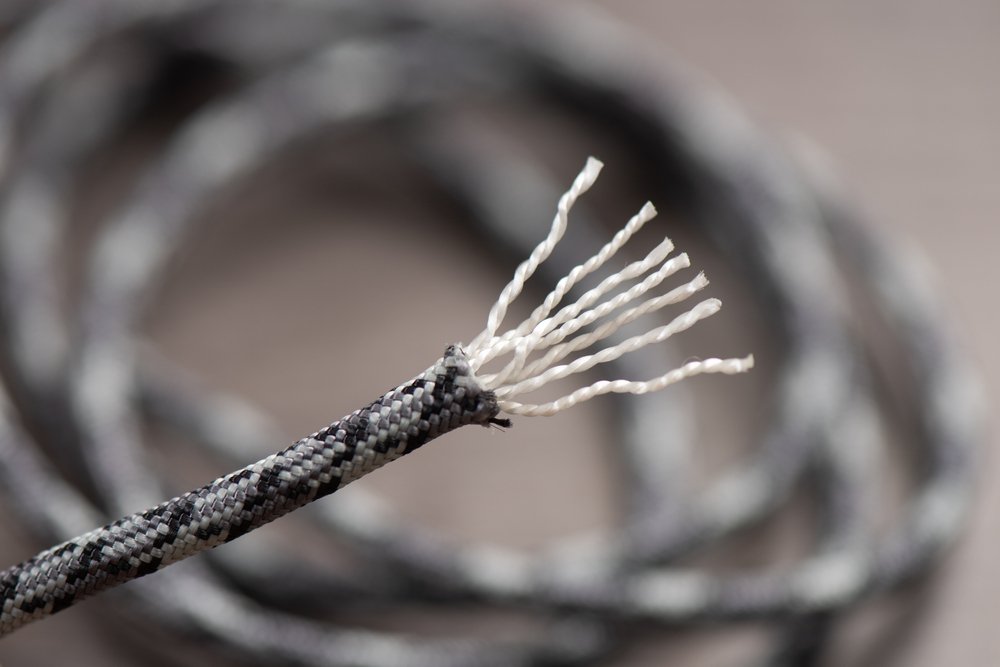
Source: Shutterstock
The term “commercial” means the paracord is manufactured and distributed in substantial quantities to the general public. The most common type of commercial paracord you’ll find on the market is 550 paracord.
Commercial paracord is available in different colors, lengths, patterns, and other features that may be customizable to fit the unique needs and preferences of customers. Manufacturers of commercial paracord use the same construction methods and materials as those used in military-grade paracord production. However, the strength and quality of commercial paracord don’t always meet military specifications.
To know if you bought a military-grade paracord or a commercial paracord, look for the twisted-colored inner strand, or the “Colored ID Marker Strand.” The U.S. military assigns each manufacturer of mil-spec paracord a single color (or colors), so it’s easier to identify the manufacturer of a defective paracord product.
Mil Spec Paracord
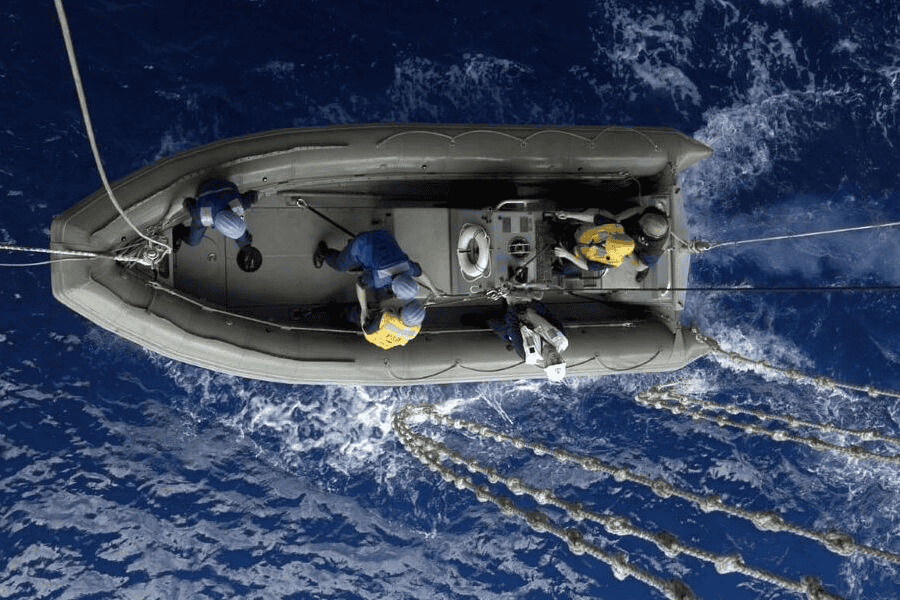
Source: Pixabay
Mil-spec paracord is known for its extreme durability, making it an ideal choice for heavy-duty applications and other tasks that expose it to demanding weather conditions. It goes through rigorous testing to ensure it’s safe for U.S. Military use.
The most common type of military-grade paracord is MIL-C-5040H Type III paracord. For the untrained eye, commercial and military-grade paracord look and feel the same. However, they have some key differences, such as:
- The nylon manufacturers use for MIL-C-5040H paracord goes through a pre-treatment process before being made into a cord.
- MIL-C-5040H paracord shouldn’t lose more than 15% of its original breaking strength after it has been exposed to heat and light.
- Manufacturers should use yarn that was produced within the past two years for making mil-spec cords.
Type I Paracord
Type I paracord is known by many names: micro cord, micro paracord, and 95 cord. The inside of this cord consists of one or two strands.
With a thickness of 1.18 to 2 millimeters, it’s considered the lighter and thinner version of Type III paracord. It has a low minimum breaking strength of 95 pounds (around 43 kilograms).
Needless to say, this won’t be your go-to paracord for demanding tasks. People often use it for lightweight tasks, such as crafting projects, making decorations and jewelry, making traps, and securing small items.
Type II Paracord
Type II paracord, also known as 425 paracord, is a good in-between choice if you can’t decide whether to get Type I or Type III paracord. The cord of Type II paracord is around 2 to 2.4 millimeters thick, with the inside consisting of four or more strands.
One of the benefits of using Type II paracord is that it offers a good balance between strength and size. The exact break strength rating can vary depending on the manufacturer. In general, it’s strong enough to hold 425 pounds (181 to 193 kilograms) of static weight or force before breaking.
Type II paracord can be used for a wide range of applications. Common uses of this type of paracord include camping tasks (e.g., securing a tent or hammock), crafting projects, making survival tools, securing your gear, and tying your shoes.
Type III Paracord
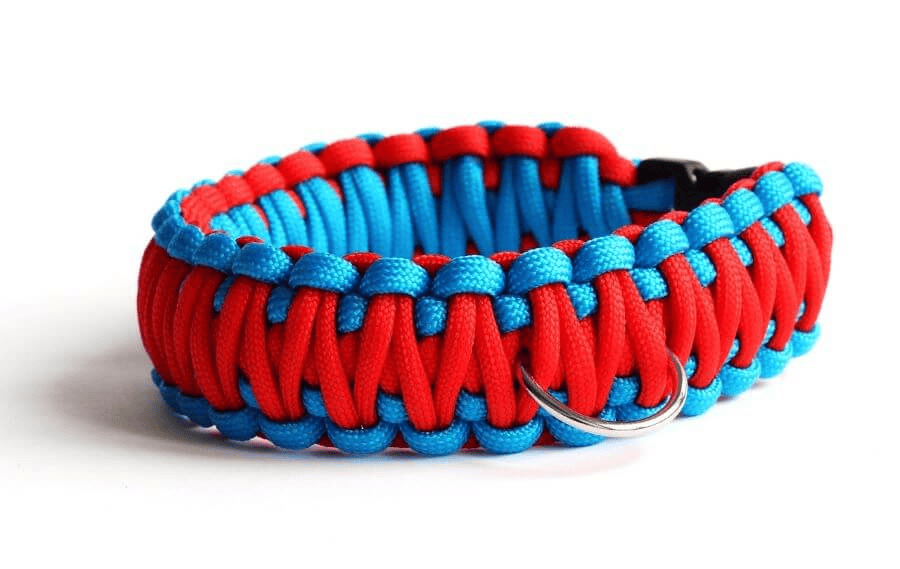
Source: Pixabay
Paracord has become synonymous with Type III paracord, or simply 550 paracord. This is the most common type of commercial paracord on the market.
Type III paracord is approximately 4 millimeters thick. It usually has a braided nylon outer sheath and 7 to 9 inner strands, allowing it to withstand up to 550 pounds (249 kilograms) of weight before failing. (This is its static break strength. Its safe working load is much lower—around 120 to 170 pounds, depending on its purpose.)
Type III nylon paracord is not designed for holding body weight or carrying heavy items overhead. It’s often used for emergency medical situations (e.g., creating makeshift slings and tourniquets), survival tasks, tying down equipment, and crafting.
Type IV Paracord
Like most paracord types, Type IV paracord is made of durable and mildew-resistant nylon. Its woven outer sheath envelopes 11 multi-purpose strands, making it a flexible and strong cord. Compared to 550 paracord, it’s thicker (5 millimeters) and has a higher break strength rating, usually approximately 750 pounds (340 kilograms).
If you’re looking for paracord for heavy-duty applications, this type of paracord is fit for the job because of its extra strength and durability. You can use it for a wide range of load-bearing tasks and demanding survival situations. While it’s not the ideal option, you can also use it for rappelling during an emergency.
Other Types and Customization of Paracord
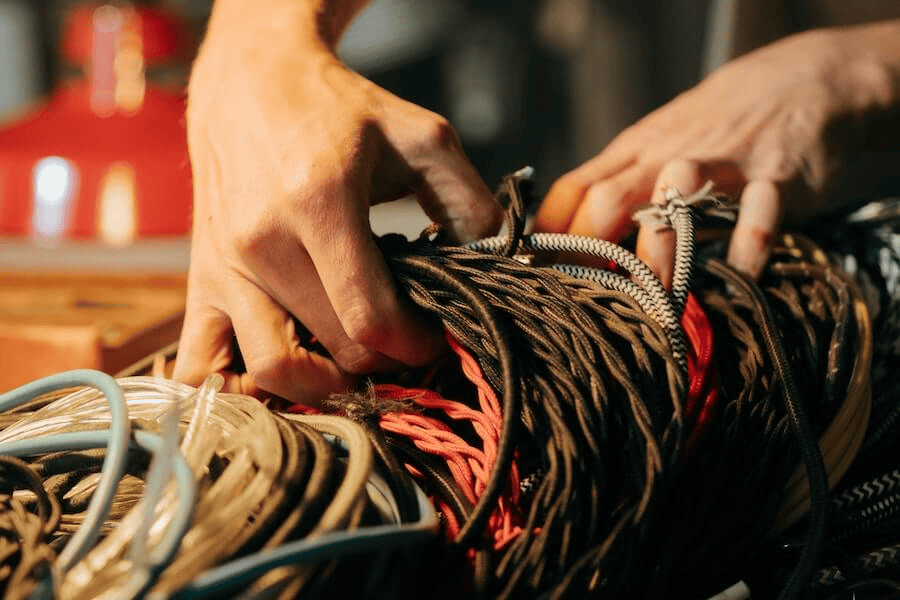
Source: Pexels
Aside from these four main classifications of paracord, there are other specialized types of paracord ropes that don’t have an official classification within the industry. Here are some of them:
Type V Braided Rope
This is also known as “950 paracord.” This type of paracord has a diameter of around 5 millimeters and a breaking strength of 950 pounds (431 kilograms). For it to be stronger and more durable, it comes with nine inner strands that are typically braided or twisted together.
Reflective Paracord
This type of paracord contains reflective elements (e.g., reflective fibers and reflective threads), which are integrated into the outer sheath of the cord. Due to its ability to reflect light back, you can easily see it in low-light or nighttime conditions.
Glow-In-The Dark Cords
Unlike reflective cords, glow-in-the-dark paracord doesn’t rely on external sources of light for visibility. It also doesn’t reflect light back in the direction of its source. Instead, it contains luminescent or phosphorescent materials that absorb and store light energy in order to produce a continuous glow in dark conditions.
Paracord with a Fire-Starting Strand
The purpose of this paracord is to give you quick access to a fire-starting material when you’re in a remote area or during emergencies. This kind of paracord comes with a paraffin-coated strand that easily catches fire and sustains a flame. This additional strand is typically located within the inner core of the cord, beside the other standard strands.
Paracord Manufacturer Spotlight: Baiyuheng Outdoor
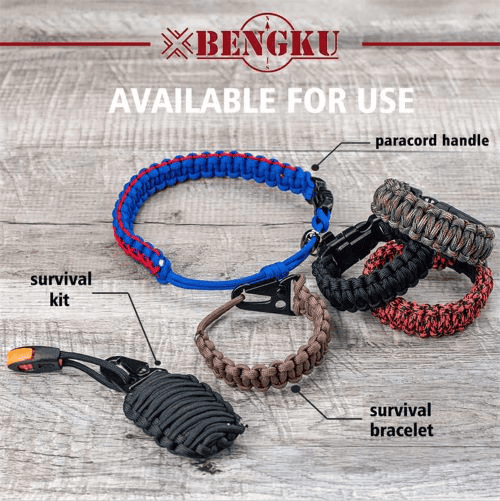
Source: Baiyuheng Outdoor
If you’re in the business of selling outdoor and survival gear, it’s important to find the right manufacturer or supplier. There are plenty of choices out there. But if you’re having a tough time finding one, perhaps you might want to consider Baiyuheng Outdoor.
About Baiyuheng Outdoor
Baiyuheng Outdoor is a professional manufacturing company based in Jiangmen, Guangdong, China. Since 2010, the company prides itself for producing high-quality products for outdoor recreation, survival, and emergency preparedness. Part of their services is to develop and produce products that satisfy the unique requirements of their clients from all over the world.
Their Best Paracord Product
When it comes to paracord, Baiyuheng Outdoor has plenty to offer. One of them is commercial 550 paracord that’s 4 millimeters thick. The inner core of this paracord consists of 7 strands, which are made up of 3 yarns each. Like other paracords in its category, it can withstand up to 550 pounds of static weight or tension before failing.
Benefits of Working with Baiyuheng Outdoor
Baiyuheng Outdoor has received lots of positive reviews from its customers all over the world. For one, they have a great customer service department that can answer your inquiries promptly and provide helpful solutions. They also offer plenty of extra services, including free samples, free product photos, a door-to-door delivery option, drop shipping, logo and packaging customization, and much more.
Conclusion
To sum it up, paracord isn’t created equal. It’s available in different lengths, sizes, strengths, and purposes. There are officially four classifications of paracord grade: Type I, Type II, Type III, and Type IV. Paracord can also be classified as commercial-grade or military-grade.
The quality and strength of paracord can also be influenced by the manufacturing process and standards of a brand. That’s why it’s important to take your time shopping for a reputable paracord manufacturer, such as Baiyuheng Outdoor.

